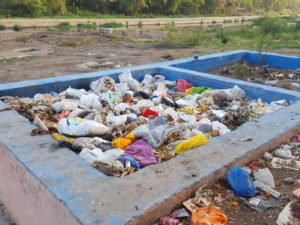Buena Monte Society, Pashan road, Pune
From November to April, management of dry leaves is one of the major concerns for people. Especially for the societies with a lot of trees, it becomes a nightmare.
Currently, we are discussing various composting methods in the weekly blogs. In last 3 weeks blogs, we discussed creation of composters for individual-level composting. In the next few blogs, we will visit societies/institutions that manage dry leaves in eco-friendly manner.
All the methods discussed in these blogs are tried and tested ones. They are experiences collected from Brown Leaf members.
Use these methods as blue-prints. Simply pick up the method suitable for you and start composting. If you face any difficulty, remember we are just a click away. You can get in touch with us at pune.brownleaf@gmail.com
Society of the Week
In Pashan area of Pune city, at the foot of the hill, there is a green society. Oh, green society, because it boasts around 280 trees.
280 trees? Wow!!
It is heaven. If you are into bird-watching, just spend an hour there and your bird checklist will increase multifold. While there to visit the composting project, we spotted a pair of mongooses as well.
Such a great diversity of flora and fauna.
What is the scenario in winter when leaf fall starts?
Leaf fall from 280 trees? Imagine the quantity of leaf litter!!
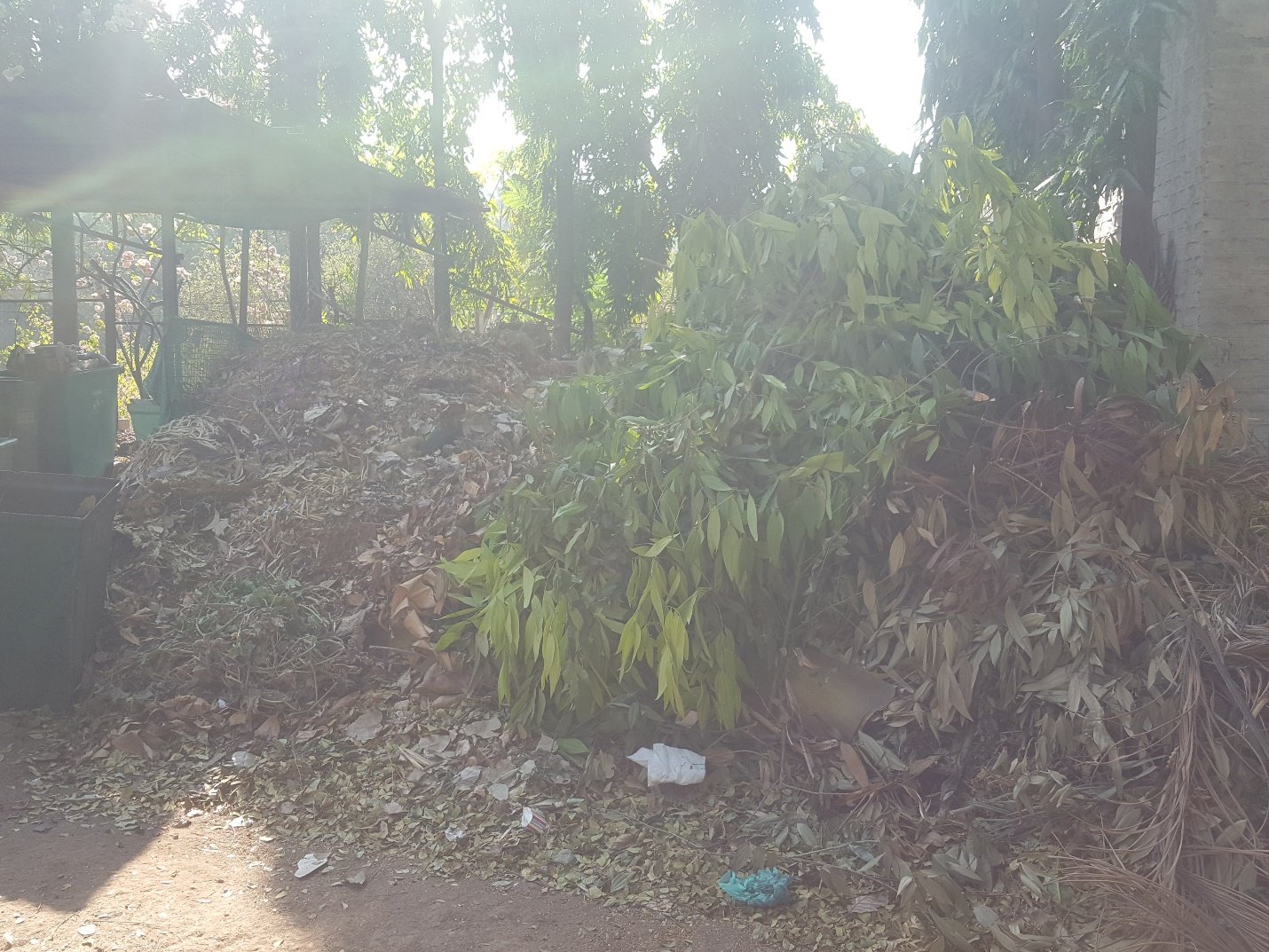
And yet, not a single dry leaf from this society is burnt or dumped in the landfill.
How do they manage?
Meet Rina Patwardhan, PHD in horticulture, who is instrumental in managing dry leaves in eco-friendly manner.
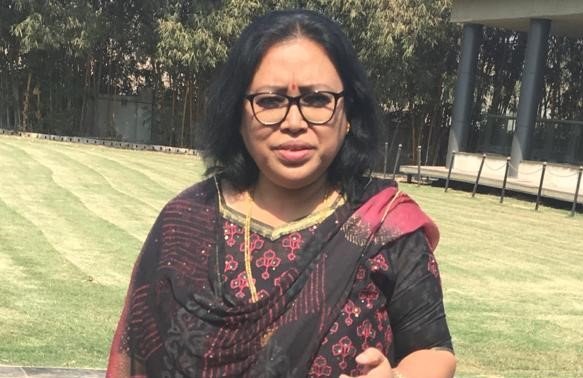
We visited her garden in one of our blogs. All the dry leaves from the trees in her bungalow premises, are utilized in her garden.
She looks after society-level composting as well.
Here is how it is done
Daily, leaf litter from the individual households and society streets is collected and brought to a central place.
Here, leaves are shredded.
Shredding serves two purposes,
- Volume reduces to almost 1/4th of the original. Hence quantity becomes manageable.
- Leaves break down to smaller size. Hence surface area reduces, and composting becomes faster.
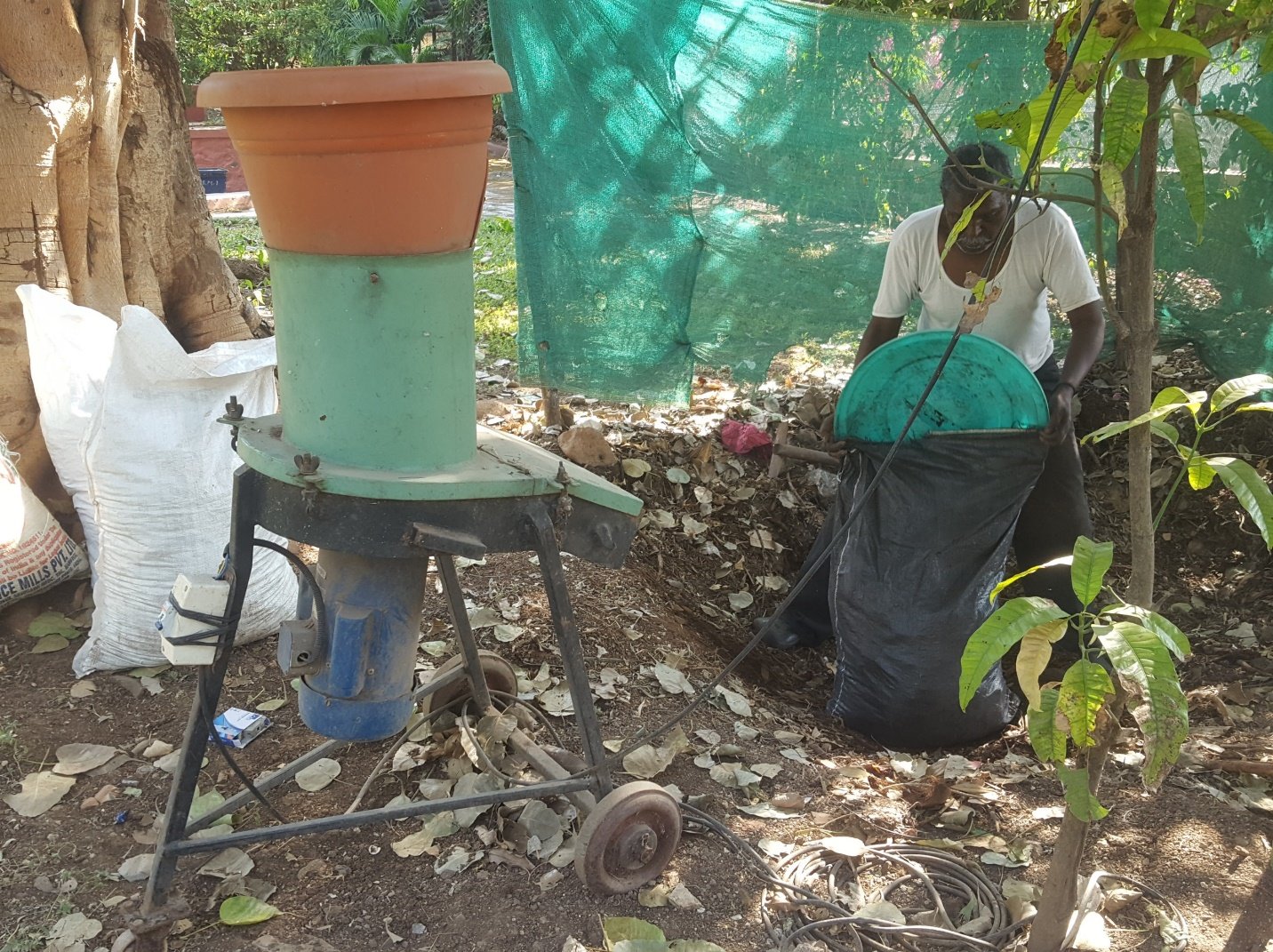
Shredder at the society
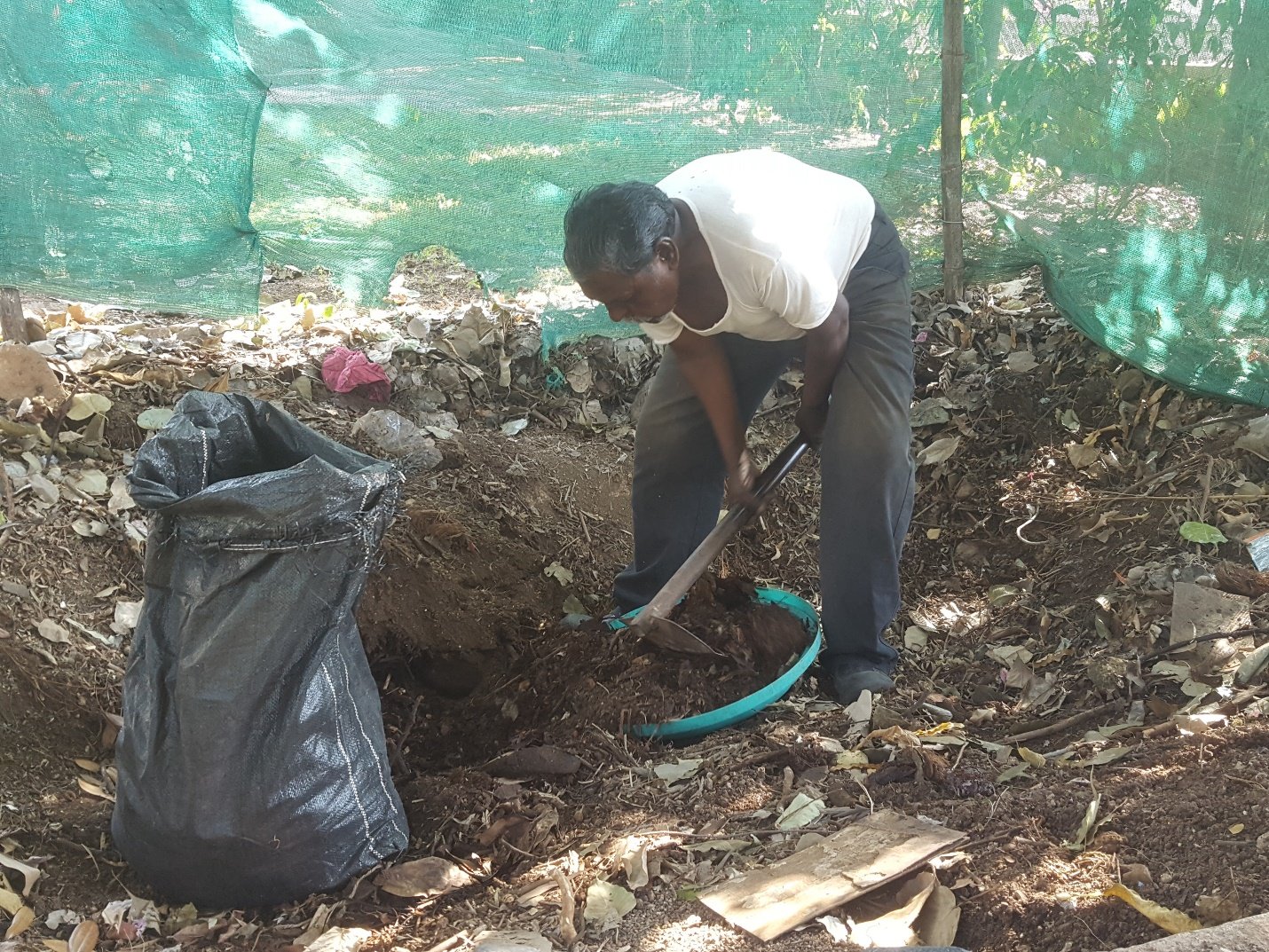
Harvesting ready compost
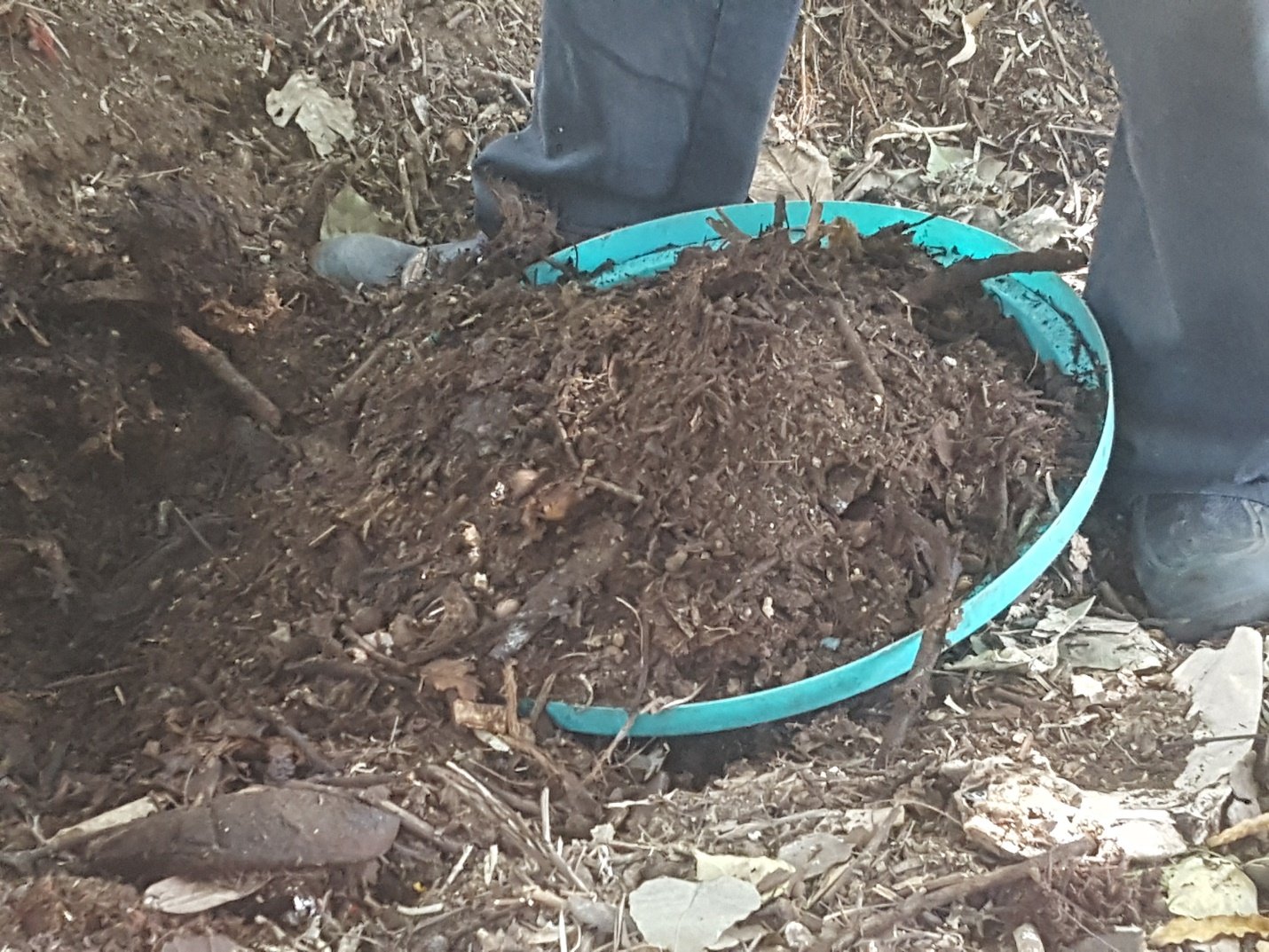

Filling ready compost in the bags
They practice pit composting. Means, a large pit is dug, and shredded leaf litter is deposited in this pit.
Culture is added to provide microbes to the process.
In next blog, we will discuss pit composting in detail. Here is the guide you can download to learn more about the process, https://brownleaf.org/wp-content/uploads/2018/10/How-to-manage-dry-leaves.pdf
Compost thus produced is distributed among the members and excess is sold.
Do all leaves are accommodated in this pit? No. The quantity is such that not all leaves are accommodated in this pit.
What do they do with the surplus?
Yes, they donate those leaves to the ones who need them for mulching and composting. This guide discusses donation option too in detail, https://brownleaf.org/wp-content/uploads/2018/10/How-to-manage-dry-leaves.pdf
Some of the leaf-takers, accept truck-load of dry leaves at a time, for the farm.
This is the strategy adopted by Rina, MULCH – COMPOST – DONATE.
With combination of these 3 options, she manages such a huge quantity of dry leaves in eco-friendly manner.
What are the challenges?
Usually, majority members in the society are indifferent. In this case, Rina along with 1-2 people, looks after the process, with not much support from the society members.
Scenario is not much different in any other society.
Rina shares that, mentality, is to pay somebody to take away the leaves. Her experience is that people prefer paying somebody to get rid of it, rather than deal with it.
“Not in my backyard” is the dominant mentality. Nobody wants a composting project near their house.
Ironically, they do not have problem with those leaves being dumped in the dumpyards, which is SOMEBODY’S BACKYARD.
When somebody is paid to take away those leaves, nobody bothers to inquire what exactly that person does with the leaves. That person might burn them or dump them somewhere. All members focus is on removing leaves from their premises.
Dedicated members like Rina hold the fort. She spends some time every day, in monitoring the activity, ensuring everything is going on fine.
For Rina, satisfaction that she is adding nutrients to the soil by composting and keeping air clean by preventing burning of all those dry leaves, is more important.
Conclusion
If each member dedicates 10-15 minutes of their schedule, and distribute days among themselves, such projects would be easily managed.
We are running out of dump-yards. Burning of leaves creates air pollution, adds to global warming. Smoke is hazardous to our health.
Nutrients that should have gone back to the soil, get destroyed. We are losing healthy soils every year.
Airs and soils are not compartmentalized. If somebody burns leaves, it will pollute air for everybody, us, our kids.
Let’s stop this vicious cycle.
Let’s compost!!




